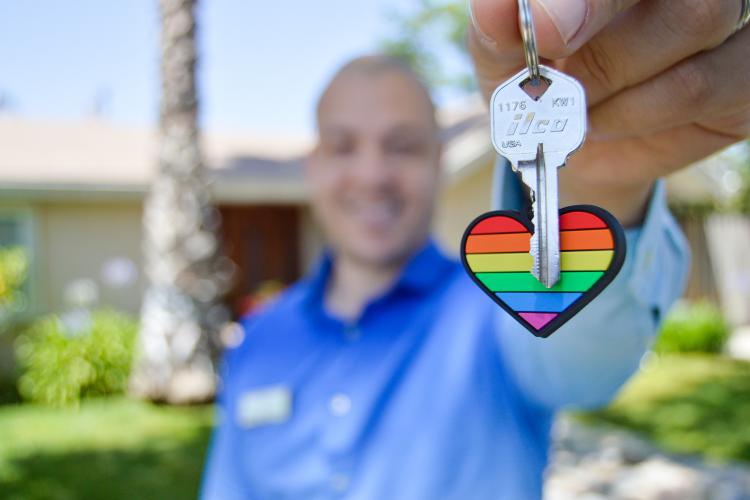
Homeowners are increasingly interested in their homes’ energy use. Whether they want to save money on utility bills, make their living space more comfortable or live a more eco-friendly lifestyle, awareness of energy use in residential buildings is growing. Smart thermostats that allow homeowners better control over their heating and cooling costs have increased in popularity over the years, expected to reach 40 million U.S. homes by 2020.
A recent survey of real estate professionals by the National Association of Realtors found that a comfortable living space, utility costs, and efficient lighting are among the top 6 most important factors that clients consider when looking for a new home. Nearly 95% of homebuyers specifically seek out homes that are comfortable.
Despite the demand for these comfortable, more efficient homes, many cities and states lack the policies necessary to ensure that these features are made visible during real estate transactions.
Everyone Benefits from Energy Disclosure Policies
Energy disclosure ordinances raise awareness of a home’s energy use and efficiency by requiring sellers to disclose utility costs, energy audit results or energy efficiency features when their home is listed for sale. This transparency benefits not only the home-buyer and -seller, but also municipalities by helping them meet energy reduction targets, and real estate agents by giving them new selling points to distinguish the home from others in the neighborhood.
Different Approaches to Transparency
There are a number of ways that energy information can be disclosed in real estate listings. Some cities/states simply require the disclosure of utility costs (Chicago, IL and Minneapolis, MN), while others require the listing to include “energy efficient characteristics”, which includes features such as high efficiency HVAC equipment and insulation values (Kansas and South Dakota). Portland, OR has taken a different approach by requiring every home to receive a Home Energy Score before it can be listed for sale.
We reviewed energy disclosure ordinances around the nation and here’s what we found:
Minneapolis, MN
In February 2019, the city of Minneapolis approved an ordinance that requires energy efficiency characteristics to be included in the already required Truth in Sale of Housing report when a home is sold. This covers information on the home’s insulation, heating systems and windows. The new policy will go into effect in 2020 and is slated to have a substantial impact on the city’s housing stock. 90% of Minneapolis homes were built before the city adopted an energy code in 1980 – 70% of these homes lack adequate insulation necessary to keep homes warm during icy Minnesota winters.
The ordinance is designed to arm new homeowners with the information they need to improve their new homes, while at the same time helping the city meet its climate goals.
Chicago, IL
In 1987, Chicago passed an energy cost disclosure ordinance that required sellers to disclose the previous 12 months of a buildings heating costs at the point of sale. Chicago soon became the first municipality in the United States to allow immediate disclosure of residential costs, both gas and electric, whenever a home was listed for sale on MRED, the local multiple listing service. The updated ordinance permits automated population through an Energy eCompliance tool, allowing home sellers to easily disclose their utility costs at the time of listing. The eCompliance tool enables a listing agent to enter the home’s utility account numbers, which then automatically populates annual utility cost information. The tool helps real estate agents in Chicago provide homebuyers with immediate online access to an energy report for a property, increasing overall compliance with the city’s disclosure ordinance.
Portland, OR
The city of Portland began enforcing its Home Energy Score ordinance in January 2018. The ordinance requires sellers of single-family homes to obtain a Home Energy Score from a licensed assessor and disclose the information, including estimated energy costs, prior to listing their home for sale. The assessment results must also be made available to potential buyers during open houses and in-person showings.
The requirement is intended to give homebuyers a better idea of their maintenance costs in the long run and identify any potential areas for improvement. While homeowners often consider the potential resale benefits of installing new floors or stainless-steel appliances, the return on energy efficiency improvements is less clear since they are rarely featured in listings and may be hidden inside walls or in basements. Portland is hoping to change that by enforcing this ordinance. So far, over 12,000 Home Energy Scores have been generated in Portland.
Conclusion
By making energy information more readily available during the time of listing, new homeowners are able to more accurately estimate the total cost of homeownership, empowering them to make better-informed decisions in their new homes. Arming these homeowners with information about utility costs, available rebates and location-specific efficiency programs will help them make the most of their new homes while living comfortably and sustainably.
For more information about residential energy disclosure ordinances in the Midwest and beyond, take a look at our new fact sheet on the topic. Feel free to share it with your local or state representatives if you think your community could benefit from adopting a similar policy.
For technical assistance, please reach out to MEEA Residential Program Associate Natalia Gardocki.